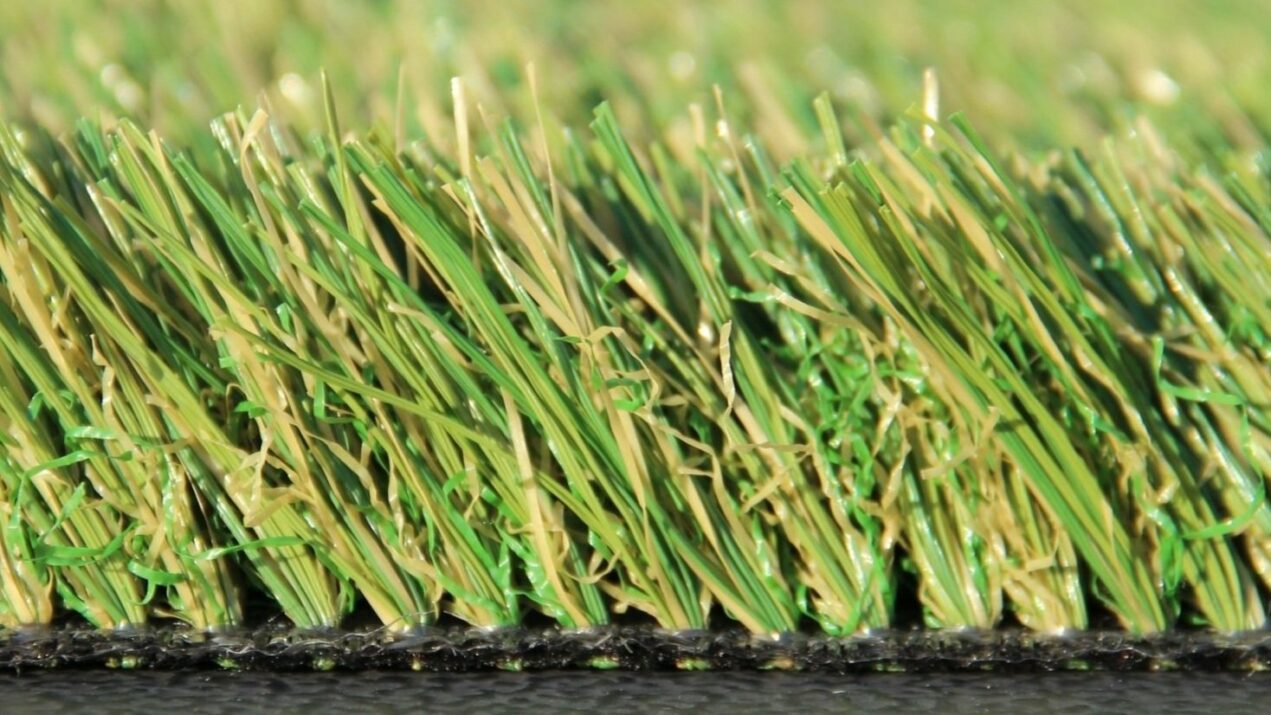To fix flattened grass, first, gently rake the affected area to lift the flattened blades. Then, water the area to encourage new growth and help the grass regain its shape.
Flattened grass can occur for various reasons, such as heavy foot traffic, extreme weather conditions, or lawn equipment usage. Regardless of the cause, it is important to address this issue promptly to maintain a healthy and attractive lawn. We will guide you through the steps to fix flattened grass and restore its lush appearance.
By following these simple techniques, you can revive your grass and ensure a vibrant landscape that enhances the overall beauty of your property. So, let’s dive into the practical solutions to tackle this common lawn problem.

Credit: returf.com
Why Does Grass Get Flattened?
Grass often gets flattened due to various reasons, including heavy foot traffic, furniture or equipment placed on it, animal activity, and weather conditions. These factors can cause the grass blades to become compressed and lose their upright position. Fixing flattened grass is important to maintain a healthy and attractive lawn.
It not only improves the overall appearance but also allows the grass to receive sufficient sunlight, air, and water for proper growth. To address this issue, consider reducing foot traffic on the affected areas, relocating furniture or equipment, repairing or reinforcing the damaged sections, and providing regular maintenance and care to promote grass recovery.
By addressing the causes of flattened grass, you can ensure that your lawn maintains its lush and vibrant appearance throughout the year.
How to Fix Flattened Grass: Step by Step Guide
Assessing The Damage
Assessing the damage caused by flattened grass is the initial step in the fixing process. Identifying the areas with flattened grass helps determine the extent of the damage. Checking for underlying issues such as soil compaction and drainage problems is crucial.
Soil compaction can prevent water absorption and air circulation, leading to flattened grass. Drainage problems can also result in waterlogged soil, causing the grass to become flattened. Fixing these issues involves aerating the soil to improve compaction and ensuring proper drainage.
By addressing these factors, you can restore your lawn and bring the grass back to its original state. Keep in mind that timely action and regular maintenance are keys to preventing further damage to your grass. Stay proactive in maintaining a healthy lawn to avoid future issues.
Fixing Flattened Grass
To fix flattened grass, start by gently removing any obstacles such as furniture or equipment and clearing debris. Then, aerate the soil using either a garden fork or manual aerator to promote healthy growth. Soil aeration offers various benefits for your lawn.
Next, topdress the area by applying a thin layer of compost or topsoil. Ensure even distribution by using proper techniques. In step 4, provide adequate hydration through regular watering and maintain proper lawn care practices. Remember to avoid commonly overused words and phrases and keep sentences brief.
Writing in an seo-friendly and human-like manner, our goal is to provide unique and easy-to-understand instructions. By using different expressions and maintaining reader interest, we’ll help you achieve a healthy and lush lawn.
Preventing Flattened Grass In The Future
Preventing flattened grass in the future can be achieved by reducing foot traffic on the grass. You can create designated pathways for people to walk on, and use protective mats or stepping stones to minimize direct contact. Training pets to avoid the grass can also help, along with keeping an eye on any potential drainage issues and addressing them promptly.
By implementing these measures, you can maintain your grass’s health and prevent it from becoming flattened. Using designated pathways, protective mats, training pets, and monitoring drainage are all effective ways to prevent flattened grass.
Frequently Asked Questions Of How To Fix Flattened Grass
What Causes Flattened Grass?
Flattened grass can be caused by heavy foot traffic, lawn mowers running over wet grass, or damage from pets and wildlife. It can also result from disease, pest infestation, or nutrient deficiencies in the soil.
How Can I Prevent Flattened Grass?
To prevent flattened grass, avoid excessive foot traffic on the lawn and mow when the grass is dry. Consider creating designated paths or adding stepping stones for high-traffic areas. Regularly aerating the soil and addressing any pest or disease issues can also help maintain healthy, upright grass.
How Do I Fix Flattened Grass?
To fix flattened grass, gently rake the affected area in a perpendicular direction to promote upright growth. If the soil is compacted, aerate it using a garden fork or aerator. Water the area thoroughly, and if necessary, overseed and fertilize to promote new growth and vigor in the flattened areas.

Conclusion
Having a flattened lawn can be frustrating, but the good news is that there are effective ways to fix it. By following the steps outlined in this blog post, you can restore the health and beauty of your grass in no time.
First, assess the underlying cause of the flattened grass, whether it’s due to heavy foot traffic, compaction, or pests. Understanding the root cause will help you determine the best solution. Next, implement appropriate measures such as aerating the soil, overseeding, and watering properly.
These steps will promote grass growth and restore the lushness of your lawn. Regular maintenance is crucial to preventing future flattening. Keep your lawn mowed at the appropriate height and avoid excessive foot traffic. Remember, patience is key. It may take some time for your grass to fully recover, but with consistent care and implementation of the recommended strategies, you will soon have a revitalized and vibrant lawn.
By incorporating these solutions into your lawn care routine, you can fix flattened grass and ensure a healthy and beautiful lawn for years to come.

